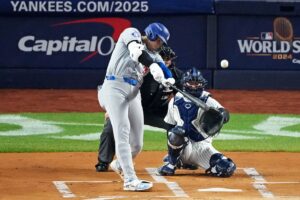With the Tim Anderson contract, both the shortstop and the Chicago White Sox gambled when they came to terms on a six-year, $25 million extension late in spring training. Eyebrows were raised, heads were scratched and even a few jaws dropped as the deal is lucrative for a player with less than one year of service in Major League Baseball.
Tim Anderson Contract a Gamble for Both Sides
From the team’s perspective, the 2013 first-round pick in the draft has emerged as one of MLB’s more encouraging fledgling middle infielders. Anderson appeared in 99 games last season, hitting .283 with nine home runs, 30 RBI, and 10 stolen bases. With so little time at the major league level, the club is taking a major risk by committing that type of capital. On the flip side, if Anderson proves to be a top-flight shortstop for the next decade, he’ll be manning the infield at Guaranteed Rate field at rock-bottom prices.
From the player’s point-of-view, he’s sacrificed arbitration rights and two years of free agency for life-changing money. For most 23 year-olds or 50 year-olds for that matter, turning down the amount of dollars and financial security would be considered foolish. But a professional athlete’s outlook on finances is far different from your average desk jockey’s. The sports landscape is littered with players dissatisfied with the long-term contract they signed early in their career as other less talented, less established players out-earn them by mind-boggling sums. This often leads to tension between the two parties, falling out of favor with the fans, and a downgrade in performance.
A Cautionary Tale
White Sox fans are hoping Anderson doesn’t follow the career trajectory of Gordon Beckham. In 2009, the number eight overall pick from the prior year got off to a torrid start posting a slash line of .270/.347/.460 to go with 14 home runs and 63 RBI in 430 plate appearances. But those were the best offensive numbers Beckham would produce in his major league career. While offering solid defense at both second and third base, his lifetime totals come in at .240/.303/.370 with 74 home runs. The last time he cracked double digits in dingers was 2012 with 16. Now 30, he’s playing at AAA Tacoma in the Mariners system after being with several teams in both the NL and AL over the last few years.
Anderson’s Numbers Lagging Behind
At this point of the year, Anderson has a little more than a full MLB season under his belt. His career slash line comes in at .274/.299/.411. To go with that he’s got 15 home runs, 49 RBI, and 15 stolen bases. The sample size is still too small to make a judgement whether or not he’ll be the fixture at shortstop that his contract suggests, but let’s take a look at how Anderson’s number stack up.
Last year’s starter in the All-Star Game for the American League, Xander Bogaerts boasts a lofty slash line of .290/.342/.418 over a 5-year career. His 162 game average for home runs and RBI are 13 and 76 respectively. Contrast that with 2016 NL starter Addison Russell of the Chicago Cubs, who comes in at .237/.311/.401 to go with an average of 18 home runs and 80 RBI over the course of a full season. Anderson’s numbers are comparable to Russell’s, but fall short of Bogaerts.
All-Star starters aren’t typically the best barometer for measuring success, so let’s see where his 2017 numbers rank. His current .259 batting average puts him at 13th amongst 25 shortstops with over 200 plate appearances. He ranks near the bottom in the all-important category of OBP coming in at number 20 with a .287 OBP. His slugging percentage (.378) ranks 17th among those 25 shortstops. His six home runs also rank near the middle of the pack tying him at number 13 with six other players. He finally cracks the top 10 in the speed category of stolen bases, ranking eighth with five, but way off the pace of the leader Trea Turner of Washington who tops the list with 27.
Looking Ahead
Obviously, it’s too early to make an assessment of who made the better bet in the long-term deal as Anderson still has a long way to go in his development. But it’s just as obvious that he’s got a considerable amount of development to do before establishing himself in the big leagues. To play the role of Captain Obvious for a third time, any mere mortal working a standard 9-5 wishes they had the opportunity to pull down that type of coin while serving as an apprentice. It’ll be interesting to re-evaluate these numbers at the end of 2018.






